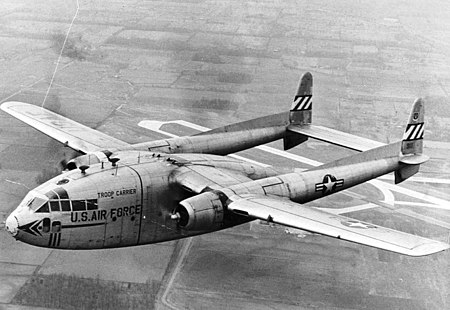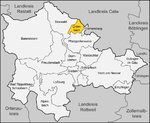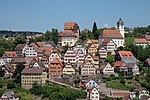1955 Altensteig mid-air collision
1955 in Germany20th century in Baden-WürttembergAccidents and incidents involving United States Air Force aircraftAccidents and incidents involving the Fairchild C-119 Flying BoxcarAugust 1955 events in Europe ... and 4 more
Aviation accidents and incidents in 1955Aviation accidents and incidents in GermanyMid-air collisionsMid-air collisions involving military aircraft

The Altensteig mid-air collision occurred on 11 August 1955 when two United States Air Force Fairchild C-119G Flying Boxcars collided and crashed three miles from Altensteig in West Germany. The aircraft were part of a formation of nine C-119s flying a training mission from Stuttgart-Echterdingen airfield, West Germany with troops from the United States Seventh Army. With all 66 on board both aircraft killed, it was, at the time, the deadliest air crash in Germany.
Excerpt from the Wikipedia article 1955 Altensteig mid-air collision (License: CC BY-SA 3.0, Authors, Images).1955 Altensteig mid-air collision
Edelhalde, Verwaltungsgemeinschaft Pfalzgrafenweiler
Geographical coordinates (GPS) Address Nearby Places Show on map
Geographical coordinates (GPS)
| Latitude | Longitude |
|---|---|
| N 48.5377 ° | E 8.5427 ° |
Address
Edelhalde 6
72285 Verwaltungsgemeinschaft Pfalzgrafenweiler
Baden-Württemberg, Germany
Open on Google Maps









